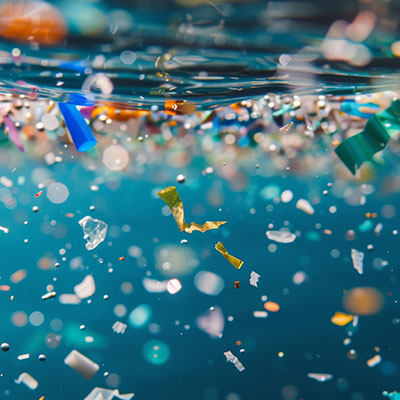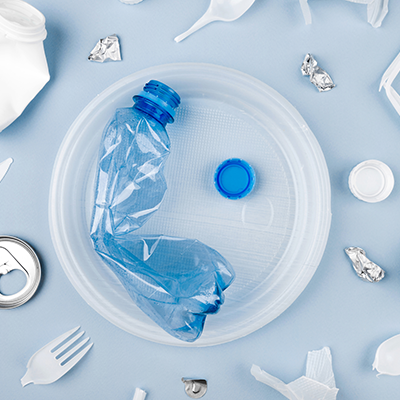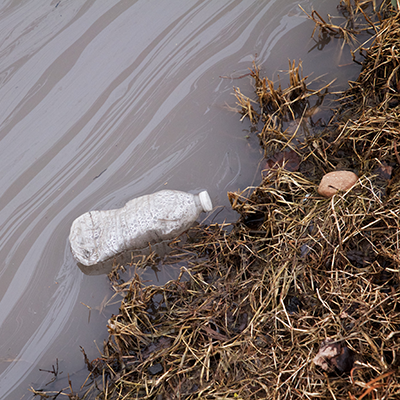
What They Are and How to Reduce Risks

With the rise of plastic in many consumer goods, including synthetic clothing, the problem is becoming more clear. The World Economic Forum labeled it a “new health crisis,” citing that we eat, drink, and breathe thousands of microplastics each year.
This knowledge can be scary and overwhelming – but there are ways to protect your home and take control of your health. Learn why a whole-house water filtration system is crucial, plus how to get started.
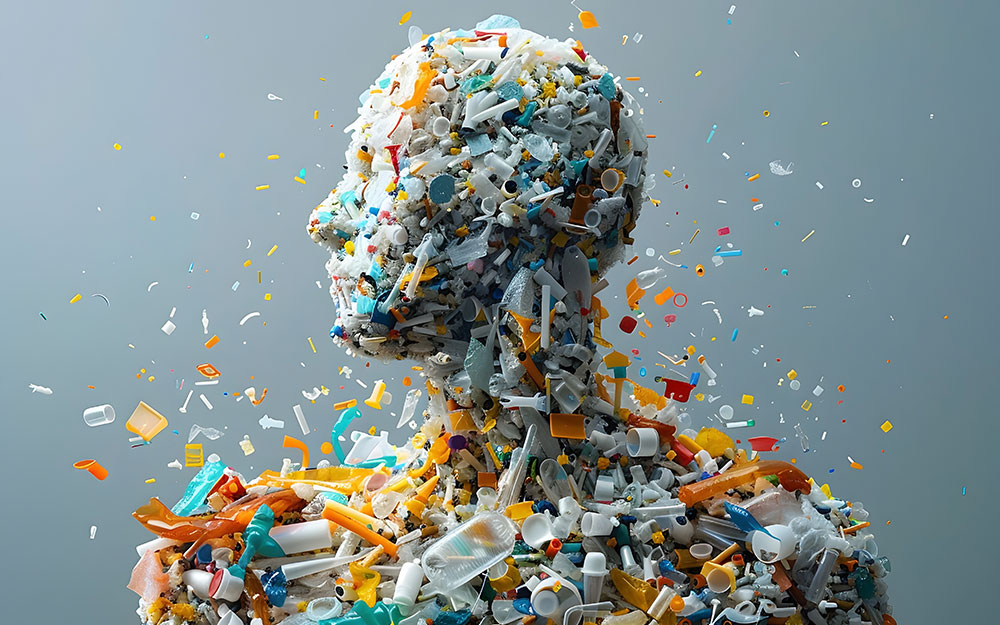
Microplastics introduce harmful chemicals and metals into our bodies. Researchers have discovered them in human blood, lungs, brains, and hearts, and have started to note some common effects:
Heart disease. Strokes and heart attacks become more likely when microplastics enter the human body.
Respiratory disorders. Scientists link microplastics to increased rates of lung cancer and asthma.
Neurological symptoms. Microplastics impact brain tissue, making us dizzy and more easily tired. They can also increase the risk of Parkinson’s, according to the National Institutes of Health.
Metabolism interference. Once microplastics are in our bodies, they disrupt our energy levels and ability to break down fatty acids.
Reproductive consequences. Microplastics affect sex hormones, the endocrine system, and overall fertility, especially male fertility.
One of the most common ways microplastics enter the human body is through water. Bathing, doing laundry, and staying hydrated are all daily tasks that can pose an unexpected danger.
Sometimes, larger plastic items break down into smaller pieces, resulting in microplastics. Plus, many other elements of your daily routine increase the risk of coming into contact with microplastics:
Washing clothes. Synthetic clothing releases millions of plastic microfibers in the wash.
Road run-off from vehicles. Car paint and tire rubber can wear off slowly over time and enter the waterway.
Plastic bottles, straws, and utensils. Disposable cutlery might be convenient, but it isn’t the safest. Drinking from a plastic water bottle, with a plastic straw, or using plastic forks, knives, and spoons can make encountering microplastics more likely.
While some microplastic risk factors can be reduced through our behavior, others are out of our control. For instance, it’s likely some microplastics enter the water supply every time it rains. This means it’s best to be prepared: Know that microplastics are common, but that detecting and filtering them out greatly reduces their impact.
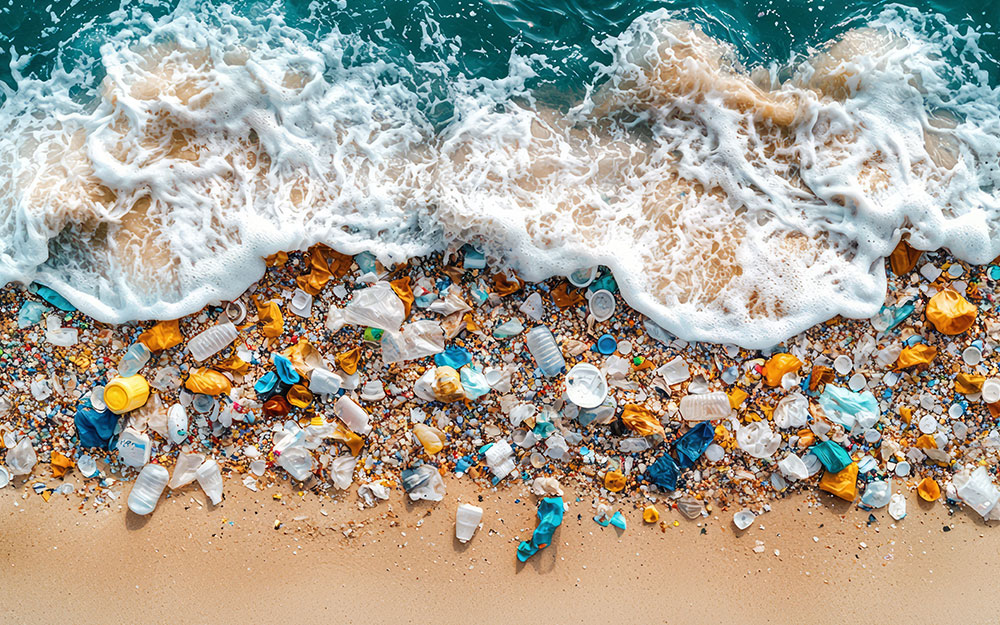
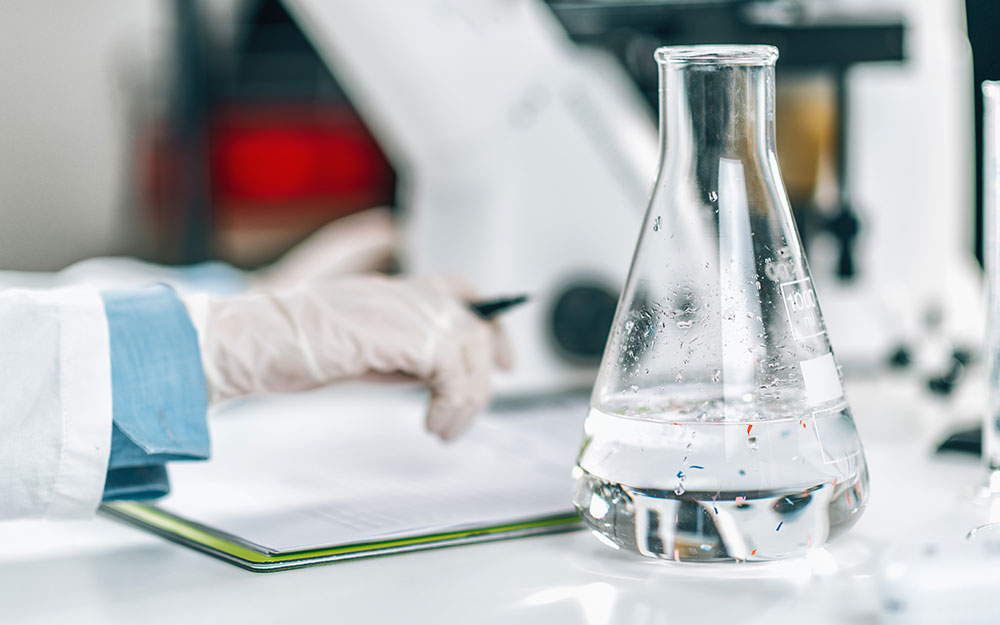
Microplastics can’t be seen, smelled, or tasted. That means testing for them is critical. You can get a lab to test your water, use a specialized sensor, or invest in a water test or kit.
One method is LifeSource’s Advanced Professional Water Test, which gives you everything you need to test your well water and send it to a professional lab (including pre-paid shipping). Once the lab finishes testing your water sample, you receive a detailed report and analysis of recommended next steps.



